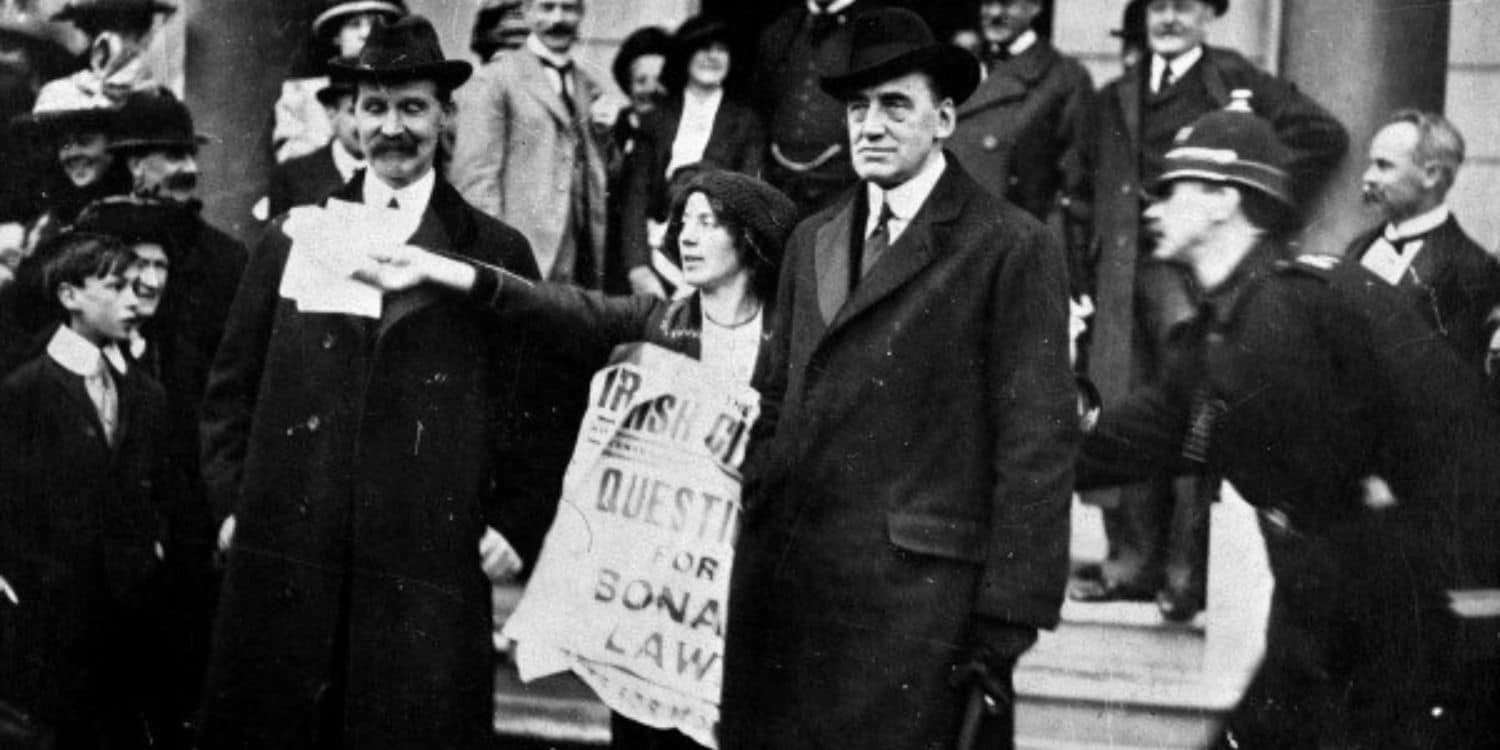We have a new statue in Belfast! It stands in Lombard Street and commemorates Frederick Douglass, the American author, anti-slavery campaigner and early champion of women’s rights.
Douglass (c1818-1895) was a former slave who became a national leader of the abolitionist movement in America. He first visited Belfast in 1845 at the invitation of the Belfast Anti-Slavery Society and returned for a second visit in 1846.
How Frederick Douglass came to Belfast
How did Douglass come to be in Belfast in the 1840s? Well, after escaping slavery in 1838 he established a new life in New York where he quickly became known as a brilliant speaker and writer.
The publication of his life story in 1845 put him in danger of being recaptured and so he was persuaded to travel to the United Kingdom for a lecture tour.
He arrived in Dublin that summer to oversee the publication of a reprint of his autobiography and was made to feel so welcome that he ended up staying in Ireland for four months – an experience that he described as ‘transformative’.
He particularly enjoyed the complete lack of racial segregation in Ireland, writing:
“Eleven days and a half gone, and I have crossed three thousand miles of the perilous deep. Instead of a democratic government, I am under a monarchical government. Instead of the bright, blue sky of America, I am covered with the soft, grey fog of the Emerald Isle. I breathe, and lo! the chattel becomes a man. I gaze around in vain for one who will question my equal humanity, claim me as his slave, or offer me an insult. I employ a cab—I am seated beside white people—I reach the hotel—I enter the same door—I am shown into the same parlor—I dine at the same table—and no one is offended…. I find myself regarded and treated at every turn with the kindness and deference paid to white people.”
During his time in Ireland he gave nearly 50 lectures in Dublin, Waterford, Wexford, Youghal, Cork, Limerick and finally Belfast. He came to speak in Belfast in December 1845 at the invitation of the Belfast Anti-Slavery Society and ended up giving at least ten lectures on abolition and three on temperance.
When he left in January 1846, a farewell breakfast was held in his honour, at which he said: “Wherever else I feel myself to be a stranger, I will always know I have a home in Belfast.” His visit inspired Mary Ann McCracken and other women to revive the Belfast Female Anti-Slavery Society.
Further travels
He then travelled on to Scotland and England, giving further lectures. Towards the end of 1846 he made three further trips back to Belfast. In April 1847 his freedom was purchased with the support of abolitionists and he was able to return back home to his family in America as a free man.
He continued to campaign for the abolition of slavery and for equal voting rights. For example he was the only black person to attend the 1848 Seneca Falls Convention, the first women’s rights convention, where he spoke in favour of women’s suffrage, saying that he could not accept the right to vote as a black man if women could also not claim the right.
He died in 1895, shortly after returning home from a meeting of the National Council of Women in Washington where he had received a standing ovation.

The Frederick Douglass statue stands close to Belfast’s First Presbyterian Church
The Belfast statue
The life-size statue was funded by Belfast City Council and the Department for Communities, and created by Alan Beattie Herriot and Hector Guest.
It stands beside the historic First Presbyterian Church in Rosemary Street, where Douglass delivered lectures during his time in Belfast. And it’s believed to be the first statue commemorating Douglass anywhere in Europe.
Donzo went down to the unveiling ceremony and later that day I visited the statue before heading to the nearby First Presbyterian Church. Here, William Crawley hosted a panel discussion on Douglass’ time in Belfast. Professor Christine Kinealy, author of ‘Frederick Douglass and Ireland: In His Own Words’ gave a great overview of Douglass’ experiences in Ireland.
The panel also included students participating in the 2023 Frederick Douglass Global Fellowship study tour and Belfast’s Lord Mayor, Councillor Ryan Murphy.

The inscription on the statue of Frederick Douglass in Lombard Street, Belfast
We also learned that Belfast has been chosen to host #DouglassWeek in 2024. #DouglassWeek is an annual series of events celebrating the work and life of Frederick Douglass. The week will include performances, creative installations and critical discussions addressing Douglass’ time in Belfast.
The statue is a welcome new feature on the route of our Best of Belfast tour. So if you want to find out more about what Belfast was like when Douglass visited, and how Mary Ann McCracken campaigned for abolition and equal rights, book yourself a spot.






